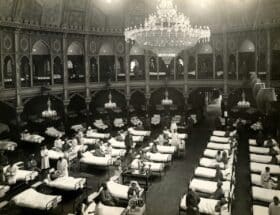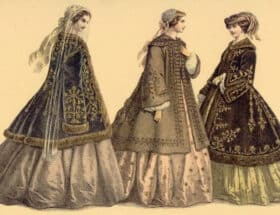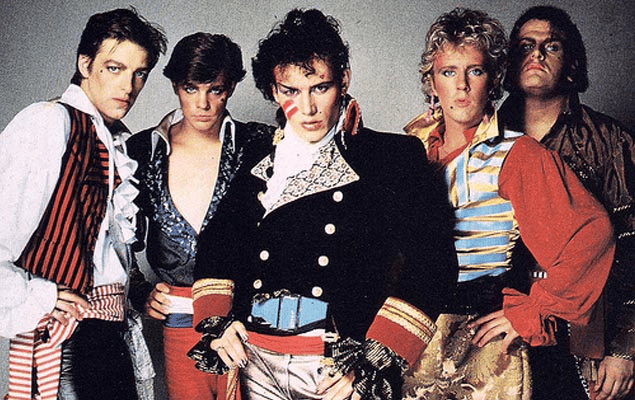By Pauline Weston Thomas for Fashion-Era.com
- Rational Dress Reform
- Mrs Bloomer
- Amelia Bloomer 1818-1894
- Rational Dress Society 1881
- Lady Harberton's Cycling Outfit & the Hautboy Hotel
- Dr Jaeger
- The Tailor Made Suit of the 1890s
- The Gibson Girl
- Clothing Rules Are Broken
Rational Dress Reform
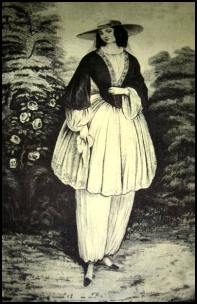
Picture of Mrs Bloomer in full bloomer dress.
The very first dress reformers in fashion history worth a mention were the female political idealists of the French Revolution. Their idea of women wearing trousers was echoed in America.
There a native Red Indian women in trousers was an acceptable sight.
Also the realities of building a new country went hand in hand with equality for both sexes. The reform was talked of long before it was internationally promoted by Amelia Bloomer.
Amelia Bloomer 1818-1894
In the early Victorian era, the American Mrs. Amelia Jenks Bloomer (1818-1894), caused quite a stir when she wrote an article for her feminist publication 'The Lily'. She tried to promote the idea of women abandoning their petticoats for a bi-furcated garment later known as the bloomer fashion.
She suggested that woman would find trousers like those worn by Turkish women easier to wear than their voluminous heavy skirts.
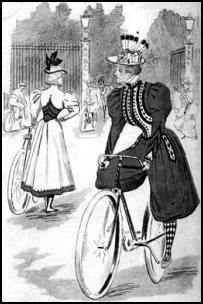
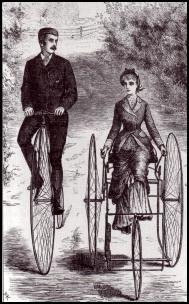
Left & right - Mrs. Bloomer wearing her suggested alternative bifurcated ensembles.
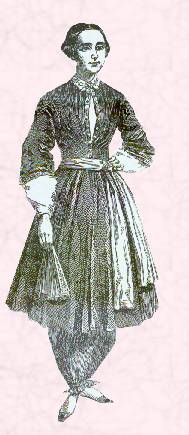
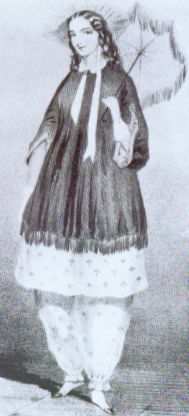
The baggy bloomer trousers she liked reached to the ankle, were frill cuffed and worn with a simple knee length skirt and bodice.
She thought it a sensible and hygienic option to the boned fashion bodices and long weighty skirts of the time.
The baggy trouser outfit was worn by a minority, including the Rational Dress Reform Society.
It never gained popularity until after Mrs. Bloomer's death.
Mrs. Bloomer abandoned trousers in 1857 when she admitted she found the cage crinoline comfortable compared to the weight of petticoats.
A year after her death in 1895 some women accepted a form of the bloomer fashion style. The trousers now called bloomers, were adopted as suitable cycling wear for ladies.
Left article picture for safe cycling in 'The Girl's Own paper' of 1880. The reader was advised that for tricycle dress there must be no trailing garments to get entangled in the cycle cog wheels. Little wonder then that bloomers became a practical and acceptable alternative to a dress such as this.
By 1897 this magazine was illustrating the cover with women on bikes and wearing full bloomers. Mrs Bloomer would no doubt have been thrilled.
When did the Rational Dress Society Begin to Work?
The Rational Dress Society formed in 1881 in London approved of Mrs. Bloomer's ideas on practical fashions. The society was formed by Viscountess Harberton and Mrs. King. They drew attention to restrictive corsetry and the immobility caused by fashions of the day. The Rational Dress Society also sold boneless stays and promoted fashions that did not deform the body.
The Rational Dress Society thought no woman should have to wear more than seven pounds of underwear. This may still seem like a great deal of clothing to modern women, but the underwear was made from bulky gathered cotton or even wool flannel and both materials were heavier than shorter silk or modern synthetic garments.
The figure actually halved what had been worn by most women in 1850 when ladies often wore up to 14 pounds weight of undergarments. Every layer made their movements more and more restricted.
Lady Harberton's Cycling Outfit and the Hautboy Hotel
So that women could participate in the craze for healthy cycling Lady Harberton suggested a dual garment which initially was a divided skirt worn under a long coat.
The idea appealed to many as sensible and practical. Those favouring the style drew attention to its value.
Accident reports of cyclists who had been encumbered by the fashion for wearing standard skirt styles often appeared in the press.
Rational dress as a fashion was finally adopted in 1895 by a handful of privileged women.
It was not universally worn and virtually no cycling costume is found in museums.
A rare example of fashionable cycling dress from the Victorian era is held at the Platt Hall Gallery of English Costume in Manchester.

Lady Harberton in her rational cycling outfit
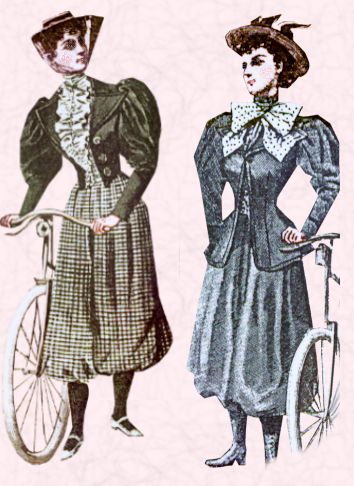
Only limited numbers ever wore the full rational dress Lady Harberton wore.
Female cyclists still risked ridicule and many preferred to wear breeches beneath a skirt and plenty more simply wore just the skirt.
Lady Harberton herself was refused admittance for refreshments at the coffee room at the Hautboy Hotel.
A lawsuit and heated debate followed which gave a more public airing to the idea of women wearing appropriate clothes for safe movement in activities.
The Tailor Made Rational Dress of the 1890s
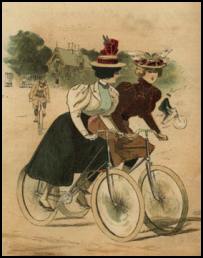
A typical tailor made garment of the late Victorian era very similar in line to the cycling costume shown left and from 1987 magazine cover La Nouvelle Mode.
Rational dress with a skirt was thought quite sensible wear compared to other styles of the era. The tailor made suit was a simple style that filtered down from the upper classes to the working classes.
Tailor made costumes were easily mass produced, were warm, strong and hard wearing.
They were an ideal garment for the new woman who wanted to be taken more seriously, have better education and gain the vote. They suited women who were opting to work in department stores or as office workers as stenographers (typists) and as telephonists.
The Gibson Girl
Another outfit that was popular with enlightened women was the image of the Gibson Girl.
The Gibson Girl was created by the artist Charles Dana Gibson. The ensemble consisted of a white high necked shirt blouse and a flared skirt.
It was practical to wear and is illustrated in Edwardian fashions.
It set a skirt and tailored shirt style that has remained in various forms ever since.
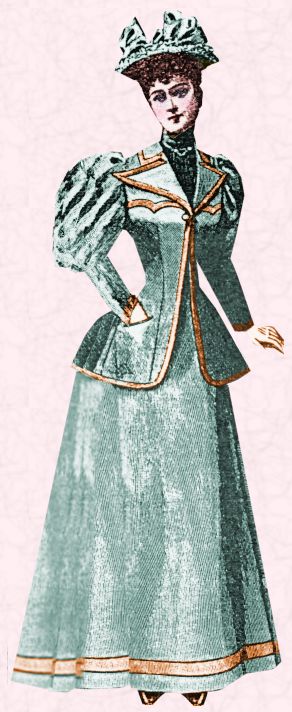
Dr Jaeger
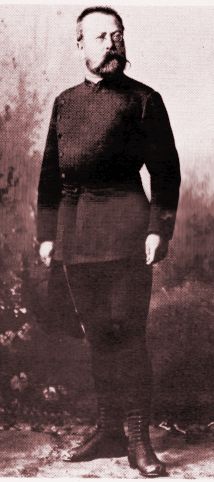
In 1884 Dr. Gustav Jaeger, a German professor of Zoology and Physiology at the University of Stuttgart developed 'scientific' theories about the use of hygienic dress and of wearing wool, next to the body.
He published his essays on health culture as Dr. Jaeger's Sanitary Woollen System.
He wanted everyone to use wool fibres throughout the house right down to the bed sheets.
He thought pure animal fibres would prevent the retention of noxious exhalations of the body.
The ideas were promoted as scientific even though they were far from being scientific.
Science was equated with being modern and therefore a rational argument hence the name we associate with dress reformers.
Surprisingly his ideas were accepted by enough people to be swayed by the inaccurate scientific argument to wear undergarments made of wool.
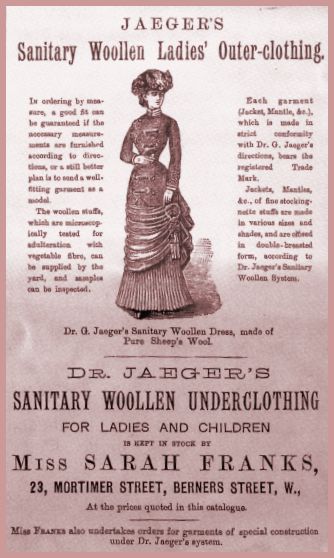
Soon after other manufacturers produced ranges of similar undergarments, but made them more colourful.
The name Jaeger was sold to an Englishman Lewis Tomalin. His shops bearing the name survived and flourished to become respected retail outlets of both men and ladies clothing made from fine fabrics.
Clothing Rules are Broken
Gradually social taboos about the restrictive rules of wearing clothing were being eroded and the real reform came after the First World War when simpler garments became acceptable and filtered into sportswear.
Early 20th century fashions for sports clothing for both sexes often seems clumsy and restricting to our eyes, but to generations previously hampered by trained skirts, corsets or tight armholes it was more practical and gave some freedom of movement.
